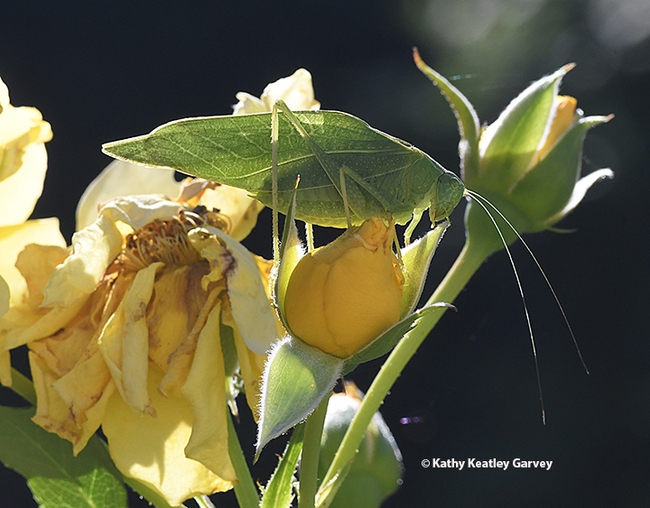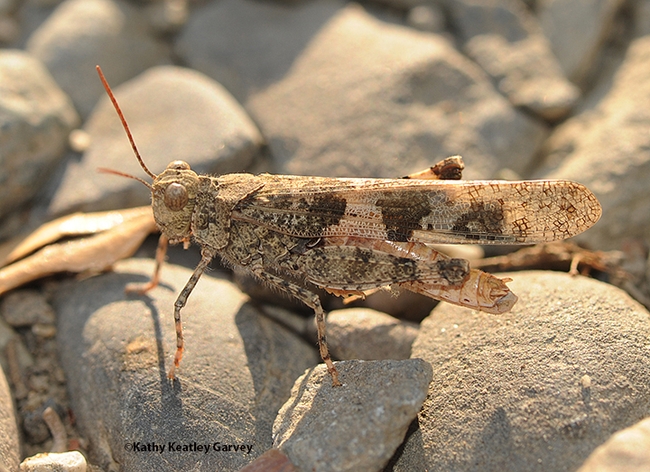- Author: Kathy Keatley Garvey
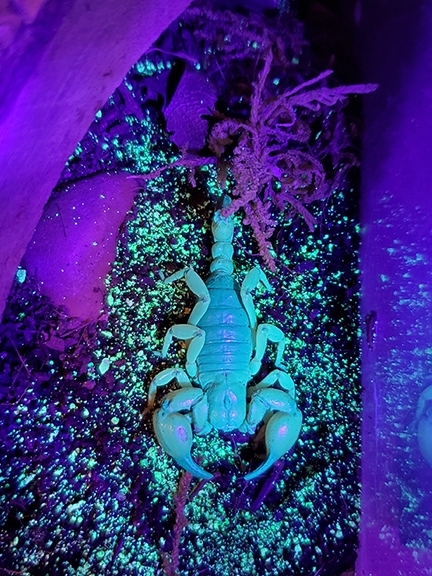
The UC Davis Department of Entomology and Nematology will not only celebrate insect and nematode diversity at Briggs Hall during the 110th annual UC Davis Picnic Day on Saturday, April 20, but also "The Diversity of Arachnids."
Doctoral student Emma "Em" Jochim of the Jason Bond lab is coordinating an exhibit she created last year to display the diversity of arachnids, such as vinegaroons, whip spiders, tarantulas, and scorpions.
"We'll have live animals and fact sheets that will give a general overview of their diversity, behavior, and habitat," Jochim points out. "I'll also bring some curated specimens to show what goes into creating a scientific collection and talk about why collections are important for understanding biodiversity."
Emma holds a bachelor's degree in biology, with a minor in geology and chemistry, from Millsaps College, Jackson, Miss., where she graduated summa cum laude. Her honors thesis: "Species Delimitation of Vaejovis Scorpions from the Santa Catalina Mountains Using Genetic, Morphological, and Geographical Data." While a student at Millsaps College, her outreach activities including sharing her knowledge of tarantulas, scorpions and vinegaroons at the Mississippi Museum of Natural Science.
At UC Davis, her advisor is Professor Jason Bond, the Evert and Marion Schlinger Endowed Chair of the Department of Entomology and Nematology; the director of the Bohart Museum of Entomology; and associate dean, UC Davis College of Agricultural and Environmental Sciences. He's also the president-elect of the American Arachnological Society.
What can you see at Briggs Hall during UC Davis Picnic Day? Cockroach races, maggot art, walking sticks, flies, ants, bees, nematodes, beetles, butterflies, mosquitoes and more. The UC Davis Entomology Graduate Student Association will be selling insect-themed T-shirts. (See news story)
Most Briggs Hall events are from 9 a.m. to 5 p.m., announced the co-chairs, doctoral student Grace Horne and forensic entomologist Robert Kimsey. This year the Bohart Museum of Entomology, part of the Department of Entomology and Nematology, will staff a pop-up tent in front of Briggs from noon to 4 p.m. The theme: "Bonding with the Bohart." Visitors can hold walking sticks and Madagascar hissing cockroaches from the Bohart's live petting zoo, and see insect specimens, including butterflies, bees, beetles and dragonflies. (The Academic Surge Building, home of the Bohart Museum, will be closed on Picnic Day).
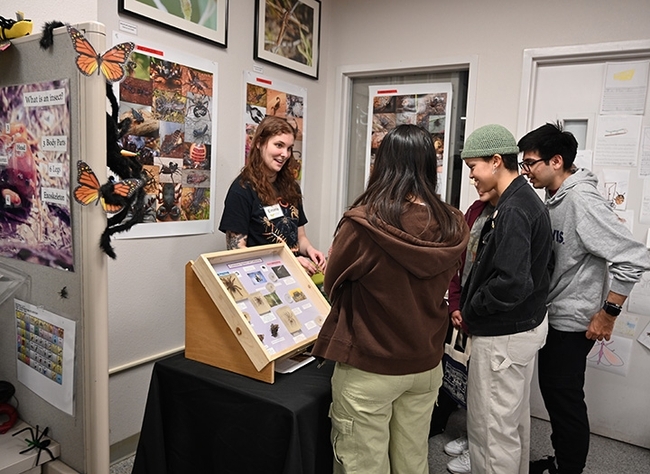
- Author: Kathy Keatley Garvey
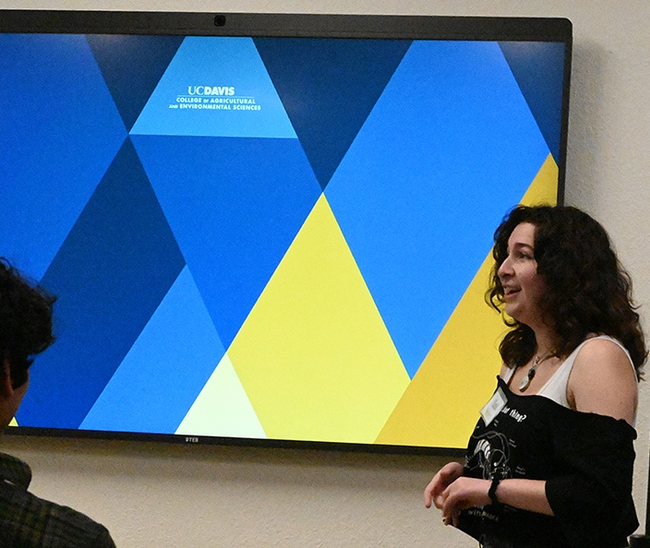
UC Davis third-year entomology student Sol Wantz, an intern at the Bohart Museum of Entomology, president of the UC Davis Entomology Club, and an undergraduate researcher in the Neal Williams' lab, shed light on "Grasshoppers, Crickets and Katydids" when she delivered a presentation at a recent Bohart Museum open house.
Jerusalem crickets, aka "potato bugs," drew the most interest.
The wingless insects, members of the family, Stenopelmatidae, are omniverous, feeding on both plants and animals, Wantz told the crowd. They are ground-dwelling insects found "mostly in North America, some in Asia and Africa," she said, and they include 7 genera and 67 species.
"They have a unique method of sound production," Wantz said. "They thump their abdomen against the ground to produce a surprisingly loud noise. Their thumping patterns can be used to identify their species."
Sol, who grew up in the Bay Area community of Belmont, is the first entomologist in her family. "My parents and brother all love insects, but I am the only one hoping to make a career out of entomology."
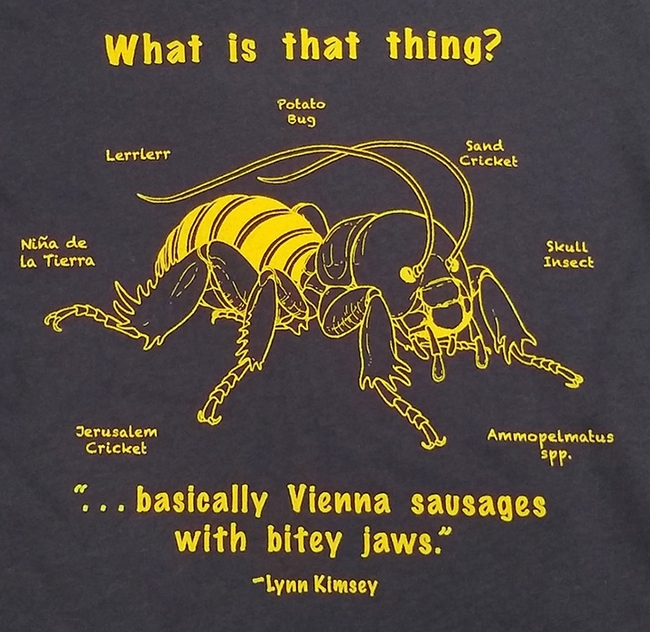
Jerusalem Cricket T-Shirt. The Bohart Museum sells a Jerusalem cricket t-shirt in its gift shop, the result of so many queries beginning with "What is that thing?" Kimsey's humorous answer, "basically Vienna sausages with bitey jaws," appears on the shirt. The art is the work of UC Davis student and Bohart volunteer Allen Chew, and the design by UC Davis doctoral alumnus Professor Fran Keller of Folsom Lake College, a Bohart Museum scientist.
Wantz also discussed grasshoppers and katydids. "The katydid genus Supersonus produces the highest frequency sound of any known animal, up to 150 kHz!" she said. "For reference, humans can only hear between 0 and 20 kHz."
Wantz grew up in the Bay Area community of Belmont. "My parents and brother all love insects, but I am the only one hoping to make a career out of entomology." Her parents, Adam Wantz and Patti Leggett-Wantz, were among those attending the seminar.
The Bohart Museum, located in Room 1124 of the Academic Surge Bulding, 455 Crocker Lane, is directed by Professor Jason Bond, the Evert and Marion Schlinger Endowed Chair in Insect Systematics, UC Davis Department of Entomology and Nematology; and associate dean of the UC Davis College of Agricultural and Environmental Sciences.
Two-Week Public Closure. Due to staff shortage, spring break, and winter quarter finals, the Bohart Museum will be closed to the public (walk-ins) for the next two weeks, Monday, March 18 through Friday, March 29. Previously scheduled group tours will continue to take place those two weeks. For more information, access the website at https://bohart.ucdavis.edu.
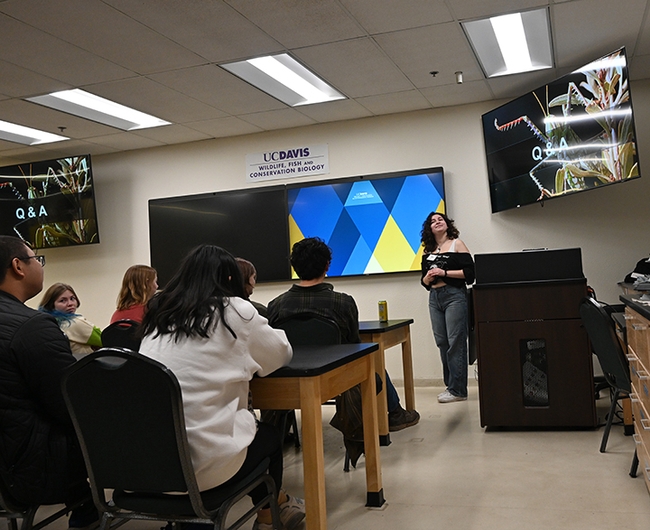
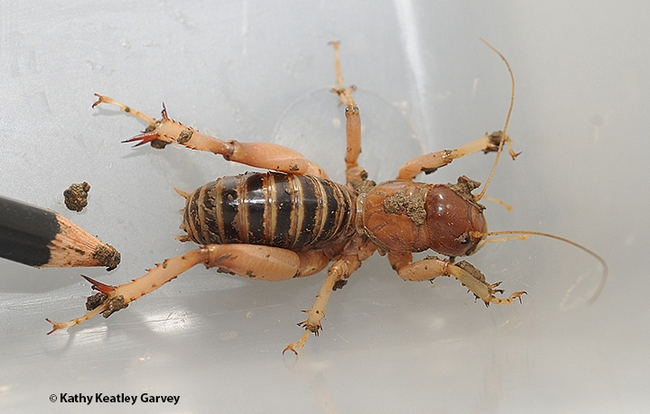
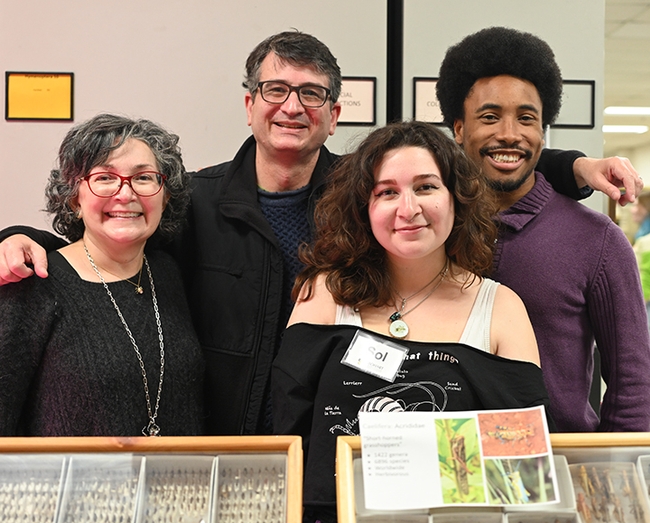
- Author: Kathy Keatley Garvey
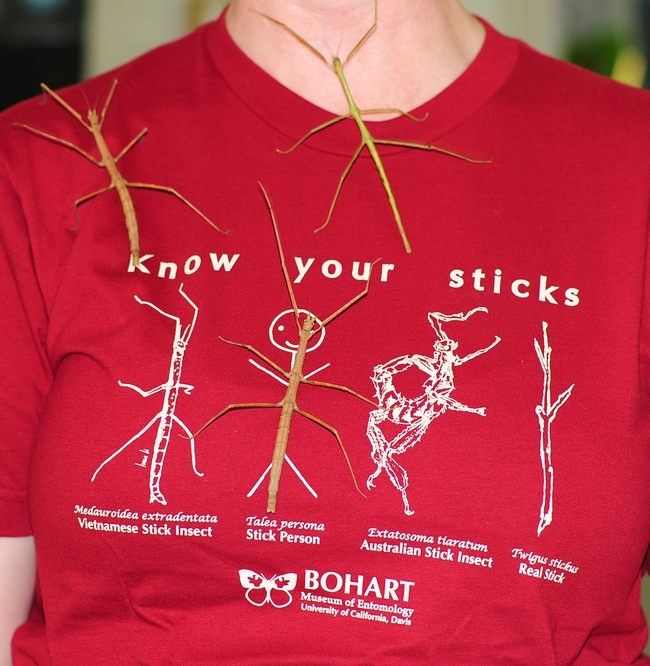
The walking sticks, or stick insects, belong to the order Phasmatodea. The Phasmids, a word derived from "phantom" in ancient Greek, refers to their ghost-like ability to camouflage themselves as leaves or twigs.
They're found on all continents except Antarctica.
At the recent Bohart Museum open house, hands reigned supreme in the form of "guiding hands" and "hand-over-hand" as visitors cradled the 'sticks.
Definitely a "hands-on" activity!
The Bohart Museum, home of a global collection of eight million insect specimens, is located in Room 1124 of the Academic Surge Building, 455 Crocker Lane, UC Davis campus. It houses the seventh largest insect collection in North America. It is also the home of the California Insect Survey, a storehouse of insect biodiversity. Noted entomologist Richard M. Bohart (1913-2007) founded the museum in 1946.
The Bohart Museum also maintains an insect-themed gift shop, stocked with t-shirts, hoodies, jewelry, books, posters and insect-collecting equipment.
In fact, the gift shop includes a t-shirt, "Know Your Sticks." It includes a stick person, a real stick or twig, a Vietnamese walking stick and an Australian spiny stick. Entomologist Fran Keller, then a doctoral student at UC Davis and now a professor at Folsom Lake College, came up with the idea, and Ivana Li, then an entomology student doubling as president of the Entomology Club--and now biology lab manager at UC Davis--drew the illustrations.
New hours! The Bohart Museum is open to walk-in-visitors on Tuesdays through Thursdays, from 9 a.m. to noon, and from 1 to 4:30 p.m.
The museum will be operational on Mondays and Fridays as well, but the focus will solely be on research those days. Director of the museum is Professor Jason Bond the Evert and Marion Schlinger Endowed Chair, UC Davis Department of Entomology and Nematology, and associate dean, UC Davis College of Agricultural and Environmental Sciences.
For the campuswide UC Davis Picnic Day on Saturday, April 20, the Bohart Museum is planning a pop-up tent at Briggs Hall; the Academic Surge building will be closed. For more information on the Bohart Museum, access the website or email bmuseum@ucdavis.edu.
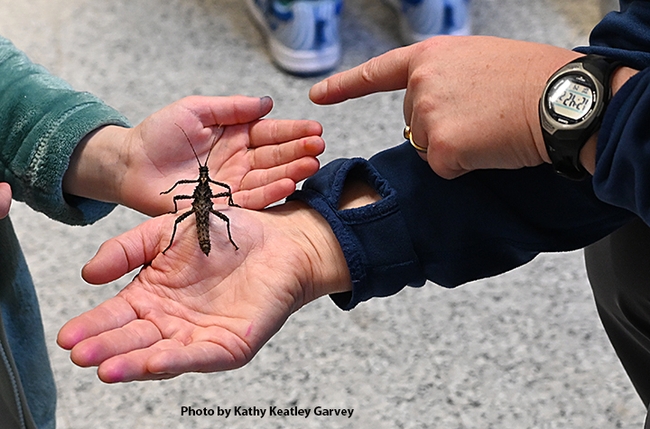
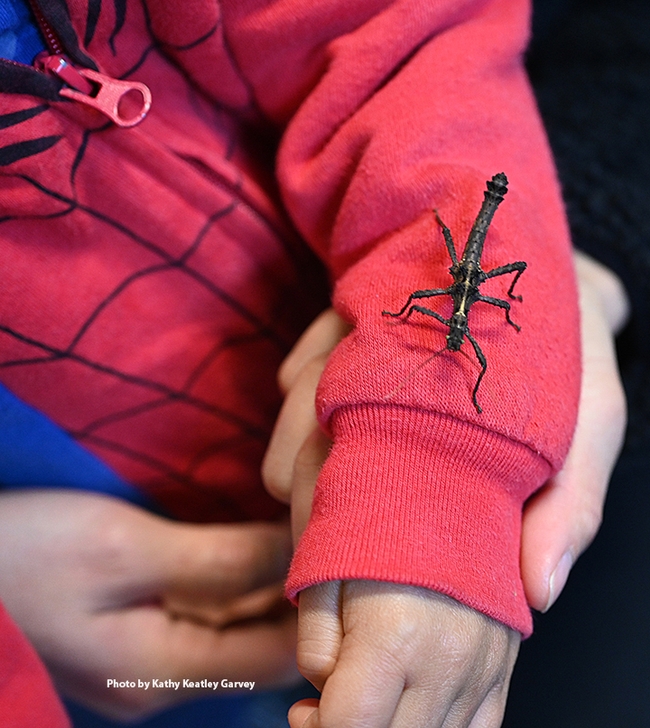
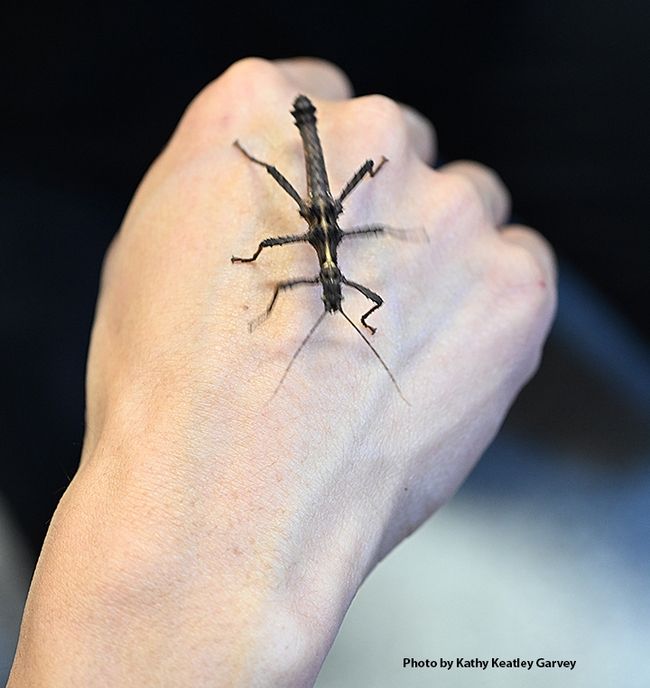
- Author: Kathy Keatley Garvey
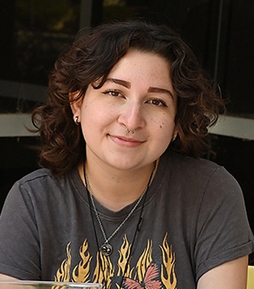
Just ask UC Davis entomology student Sol Wantz, who will present a talk on katydids (her favorite insect), grasshoppers and crickets at the Bohart Museum of Entomology open house, set from 1 to 4 p.m., Sunday, March 3 in Room 1124 of the Academic Surge Building, 455 Crocker Lane, UC Davis campus. It's free and family friendly.
We remember a crab spider that also found a katydid "incredibly fascinating." Umm, make that "nutritious." The spider grabbed the katydid on a Mexican sunflower (Tithonia rotundifola) in our garden, paralyzed it with a venomous bite, and then dragged it beneath the petals to eat it.
It's all about the cycle of life. Everything eats in the garden.
Sol Wantz triples as a curator intern at the Bohart Museum of Entomology, a student researcher in the lab of pollination ecologist and professor Neal Williams, and as president of the UC Davis Entomology Club.
“I'll be giving a overview of all of the major and most interesting--in my opinion--families of Orthoptera," she said. The order includes some 20,000 species worldwide.
Did you know that "the katydid genus Supersonus produces the highest frequency sound of any known animal, up to 150 kHz!" she asks. "For reference, humans can hear only between 0 and 20 kHz."
The Bohart Museum, directed by Professor Jason Bond, is located in Room 1124 of the Academic Surge Building, 455 Crocker Lane. It houses a global collection of eight million insect specimens, plus a live petting zoo (Madagasgar hissing cockroaches, stick insects, tarantulas and more) and an insect-themed gift shop stocked with T-shirts, hooded sweatshirts, books, posters, jewelry and insect-collecting equipment.
For more information, access the Bohart website at https://bohart.ucdavis.edu or contact bmuseum@ucdavis.edu.
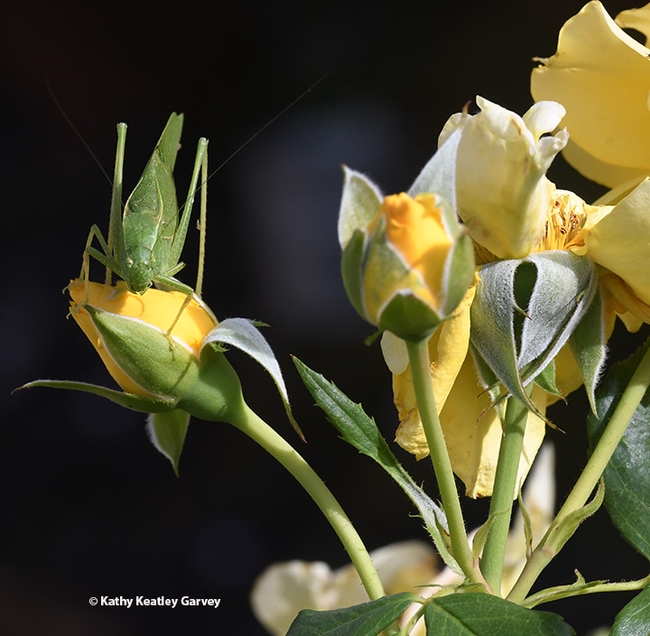
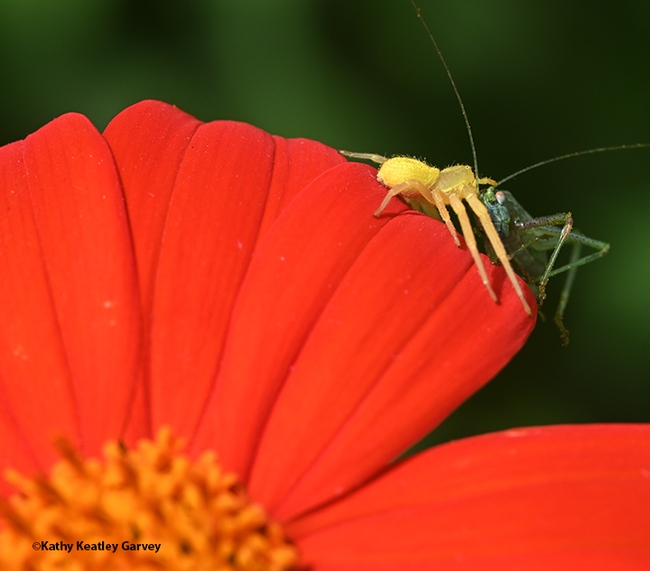
- Author: Kathy Keatley Garvey
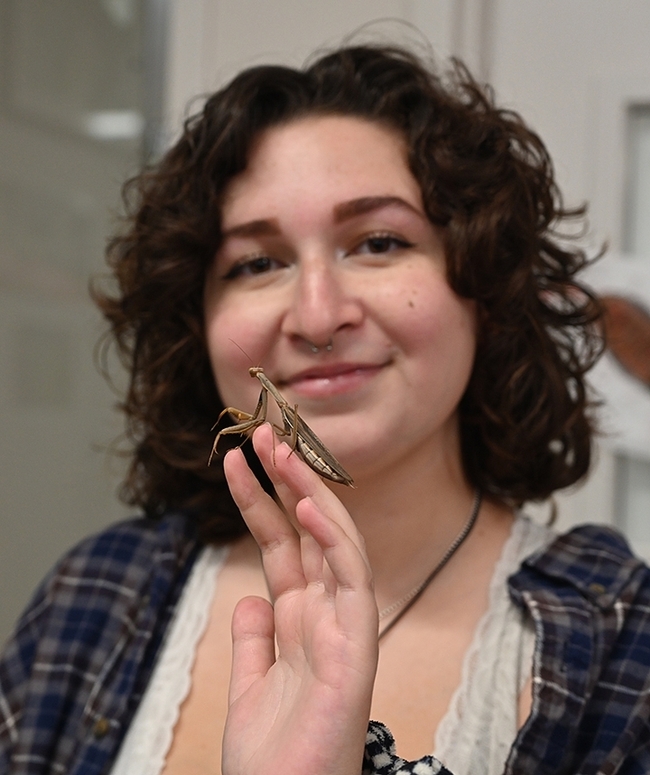
Themed "Grasshoppers, Crickets and Katydids," the open house will take place from 1 to 4 p.m., Sunday, March 3 in Room 1124 of the Academic Surge Building, 455 Crocker Lane, UC Davis campus. It's free and family friendly. Parking is also free.
UC Davis third-year entomology major Solea “Sol” Wantz, who triples as a curator intern at the Bohart Museum of Entomology, a student researcher in the lab of pollination ecologist and professor Neal Williams, and as president of the UC Davis Entomology Club, will discuss “Grasshoppers, Crickets and Katydids."
She'll deliver her presentation at 1 p.m., and questions and answers will follow. The venue: a classroom of the Museum of Wildlife and Fish Biology, located next to the Bohart Museum.
“I'll be giving a overview of all of the major and most interesting--in my opinion--families of Orthoptera," she said. The order includes some 20,000 species worldwide.
A few factoids she related:
- The katydid genus Supersonus produces the highest frequency sound of any known animal, up to 150 kHz! For reference, humans can only hear between 0 and 20 kHz.
- The family Myrmecophilidae, the “ant-loving crickets” are tiny, wingless crickets that live only in ant nests. “We even have these here in Davis, but they're hard to find unless you're digging through ant colonies,” Wantz says.
- Jerusalem crickets, also known as "potato bugs," have a unique method of sound production. "Rather than using their wings (they are actually wingless, she says) or another sound-producing organ, these crickets thump their abdomen against the ground to produce a surprisingly loud noise. Their thumping patterns can be used to identify their species."
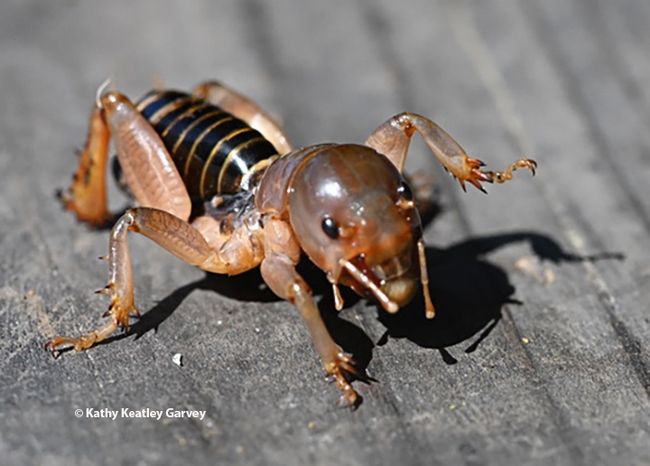
“It's actually a grasshopper defense mechanism!” Wantz says. “When under stress--usually when they are grabbed, especially around the thorax-- grasshoppers vomit a foul-smelling/tasting liquid to ward off whatever predator is attacking them.”
Orthoptera (in ancient Greece, “ortho” means "straight,” and “optera” means "wings") is an order that includes grasshoppers, crickets, locusts and katydids. Grasshopper belong to the suborder Caelifera, and crickets and katydids to Ensifera.
Wantz, who decided at age 6 that she wanted to become an entomologist, is currently re-curating and reorganizing the Bohart's collection of several thousand specimens of Orthoptera.
"After finishing my undergraduate degree at UC Davis, I aim to enter a graduate program, potentially to explore my newfound interest in systematics. Ultimately, I hope to become a professor of entomology and lead my own research lab. This appeals to me because it presents the opportunity to weave together my knowledge of wild bee ecology and conservation, love of Orthoptera and museum work, and emphasis on professional outreach and public engagement."
The Bohart Museum, directed by Professor Jason Bond, houses a global collection of eight million insect specimens, plus a live petting zoo (Madagascar hissing cockroaches, stick insects, tarantulas and more) and an insect-themed gift shop stocked with T-shirts, hooded sweatshirts, books, posters, jewelry and insect-collecting equipment.
For more information, access the Bohart website at https://bohart.ucdavis.edu or contact bmuseum@ucdavis.edu.
